Did you know that beet leaves are edible? A lot of people don’t! Instead of tossing them in the compost, try making these delicious fermented beet greens, similar to cabbage sauerkraut!
Originally published May 2021; this post has been updated.
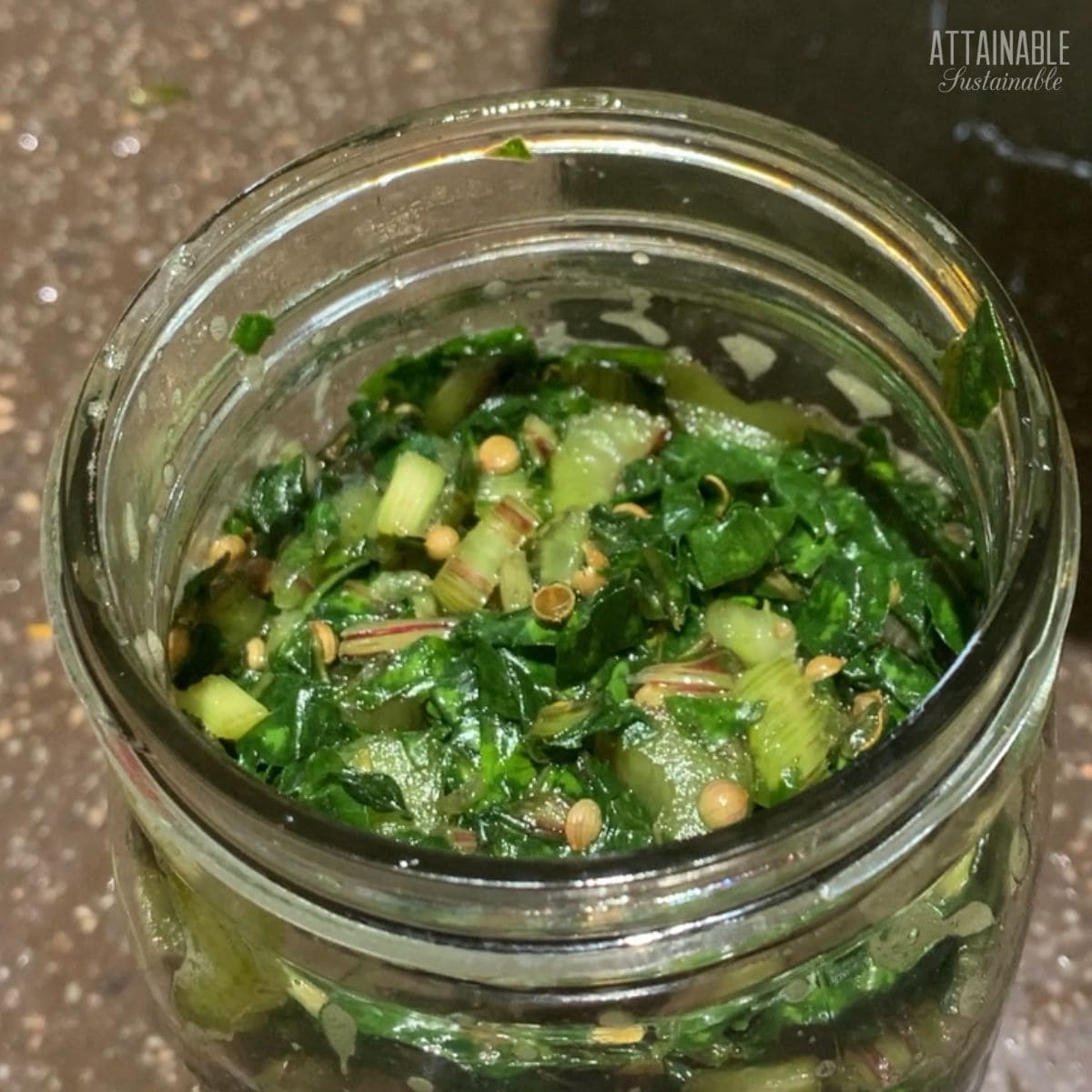
Most everyone is familiar with sauerkraut made from cabbage, and I’ve combined cabbage and beetroot to make a red sauerkraut.
Here’s another fun and delicious ferment to try: beet green sauerkraut! This recipe is a great way to use the leaves that many people simply toss to the compost. Go here for more ways to use (not waste!) beet greens.
The Handcrafted Pantry

Ready to DIY your pantry with more wholesome ingredients? Check out my ebook, The Handcrafted Pantry! Filled with delicious recipes for some of your favorite condiments, snacks, and toppings, it’s the guide you need to start skipping packaged products and embrace homemade.
Let’s Look at Sauerkraut
You have a kitchen scale, right? I find it’s the best way to measure things like greens which can either be loose or packed into a measuring cup. Weighing is the most accurate way to prepare greens.
5 Easy Steps to Transform Your Pantry!
Ready to switch from store bought to homemade? Let me help you make some changes! Grab my FREE five-part guide to getting started.
Ingredients
Beet greens— Use the stalks and leaves, basically everything that’s left after the beets are chopped off!
Salt — Use sea salt, NOT table salt. Table salt often has anti-caking agents that can interfere with the fermentation.
Coriander — Coriander is the seed of the cilantro plant so has a similar taste. You can omit this if you aren’t a fan.
How to Make Beet Green Sauerkraut
You’ll need a pound and a half of beet greens. Start by chopping the beet leaves. Chop the stalks the same as you would celery.
To prepare the beet leaves, I rolled several together and sliced them into ribbons, then made a couple of perpendicular cuts across the ribbons. You can also tear the leaves into small pieces.
There’s really not a right way to chop the beet leaves; just make sure they’re a size that makes sense for forking into your mouth!
Combine the beet greens in a large bowl with the sea salt.
Coriander seed is totally optional, but adding it gives this beet green sauerkraut a nice flavor.
Use your hands to thoroughly mix the salt and greens, then begin squeezing and pressing the leaves and stalks to release moisture. Do this until the greens seem quite limp.
Transfer the mixture to a quart-sized jar, pressing it down to remove any air pockets.
As you press, liquid will be visible and eventually there will be enough liquid to cover the solids. This is what you want — none of the solids should be exposed to air.
Place a weight on top of the mixture to prevent the solids from floating and allow to sit at room temperature for 1-2 weeks. This will depend a bit on the temperature in your kitchen.
As the mixture ferments, it may bubble and overflow, so it’s a good idea to set it in a dish to catch liquid.
As you can see, the color of the fermented product becomes a darker green. It also becomes tangy and flavorful and full of probiotics.
FAQs
How do I learn more about fermentation?
If you’re new to fermenting foods at home, this guide to fermentation will answer all of your questions!
What are the benefits of fermentation?
The fermentation process creates bacteria which can make your gut happy!
What’s the best way to let the fermentation process happen?
Room temp is best, and out of direct sunlight. Keep in mind that if you love to make lots of fun goodies, such as sourdough or kombucha or kimchi, you’ll want to keep them all far away from each other in the kitchen. Otherwise the wild yeast or other fermentation can travel to the other jars and ruin them.
★ Did you love this recipe? Be sure to give it a star rating below! ★

Beet Green Sauerkraut
Ingredients
- 1 ½ pounds beet greens stalk and leaves
- 2 teaspoons sea salt
- 1 tablespoon coriander seeds crushed (optional)
Instructions
- Prepare beet greens by washing and drying. Chop both leaves and stems into small pieces and transfer to a large bowl.1 1/2 pounds beet greens
- Sprinkle beet greens with salt. Massage thoroughly to release juices.2 teaspoons sea salt
- Add coriander seed.1 tablespoon coriander seeds
- Pack beet greens into a quart-size jar, pressing firmly to remove any pockets of air. Use your hands or a kraut tamper. There should be enough juice to submerge the solids once the jar is full to within an inch of the jar rim.
- Place a weight on the solids to hold them below the level of liquid. Screw on a lid (or use a special fermentation lid).
- Set jar out at room temperature. Loosen the jar lid daily to release any built up gasses.
- The kraut will be ready within 1-2 weeks. Test it after 7 days to see if it has a tangy enough flavor for you. If not, let it sit longer.
- Store in the refrigerator for several months.
Notes
- It's crucial that the beet leaves remain covered by liquid as it ferments, to avoid mold. Check your ferment daily to make sure all solids are submerged. If any pieces rise above the brine, push them back down and weight them under the brine.

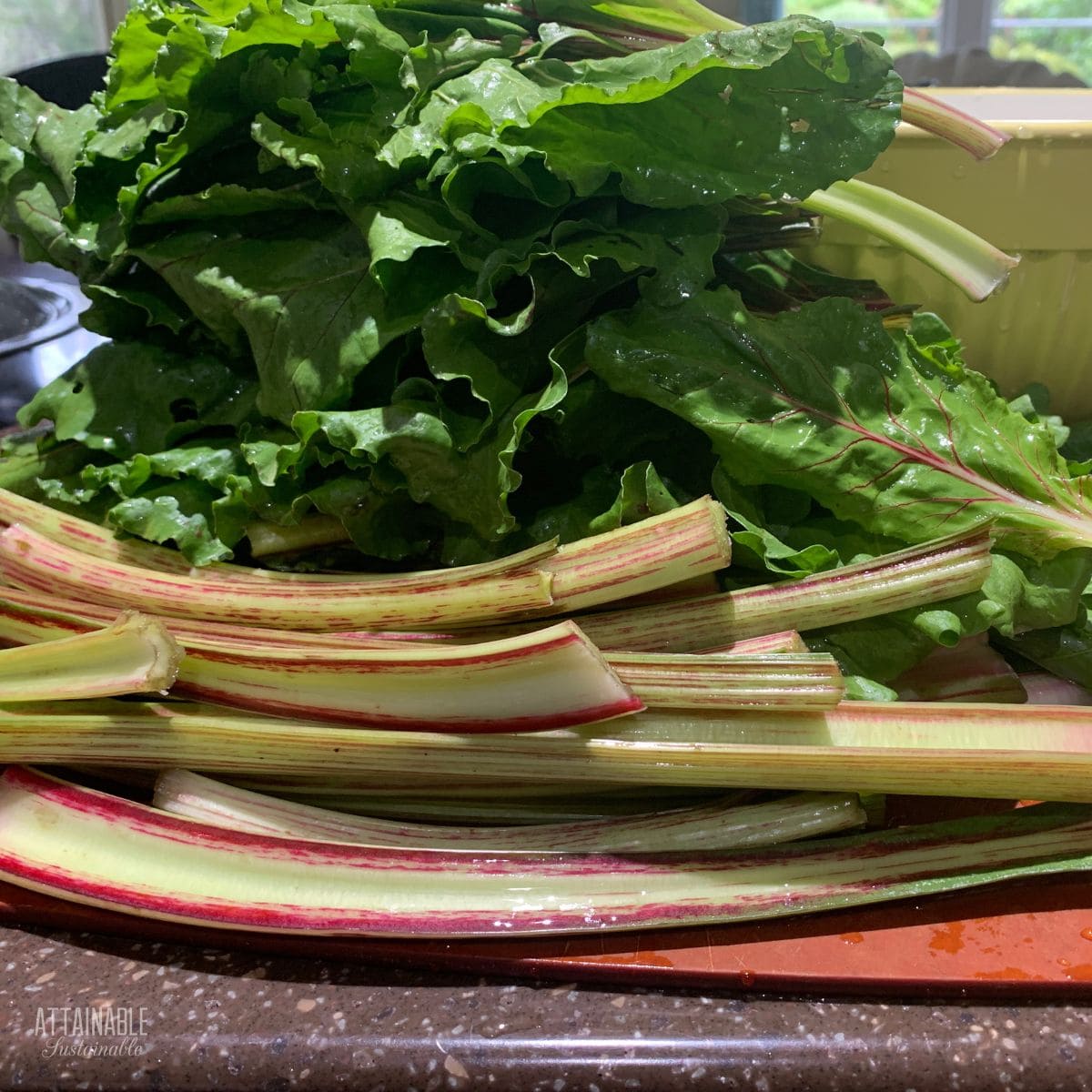
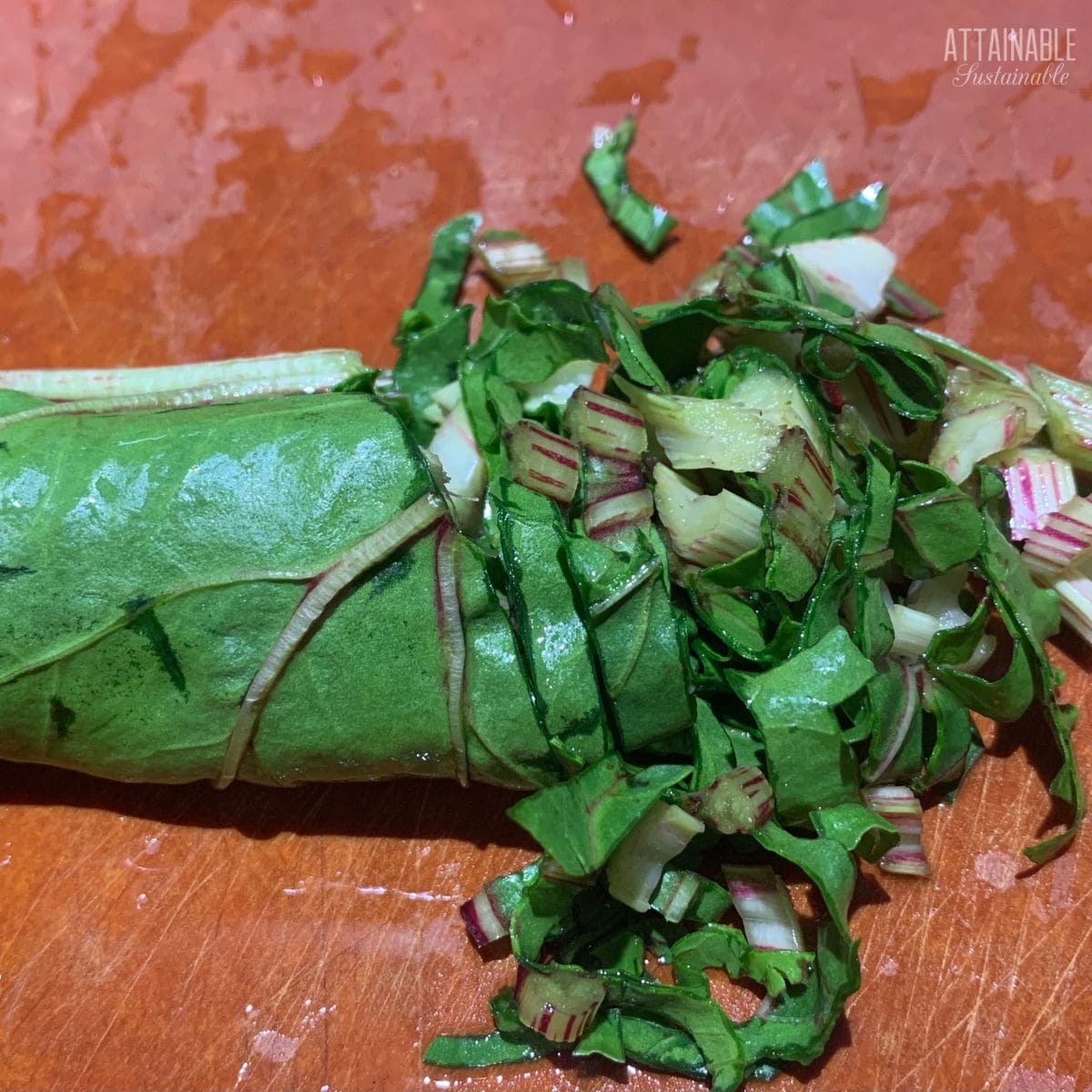
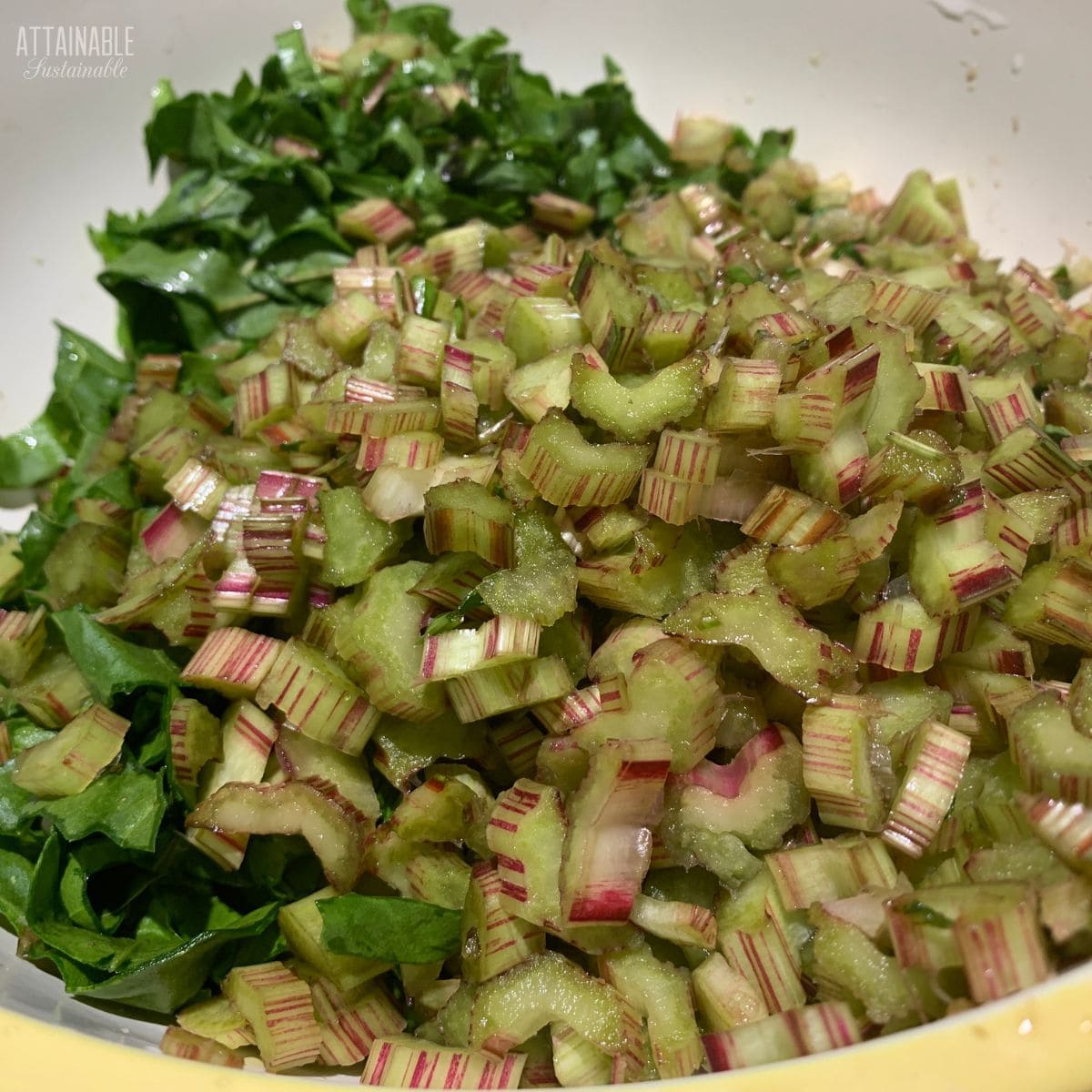
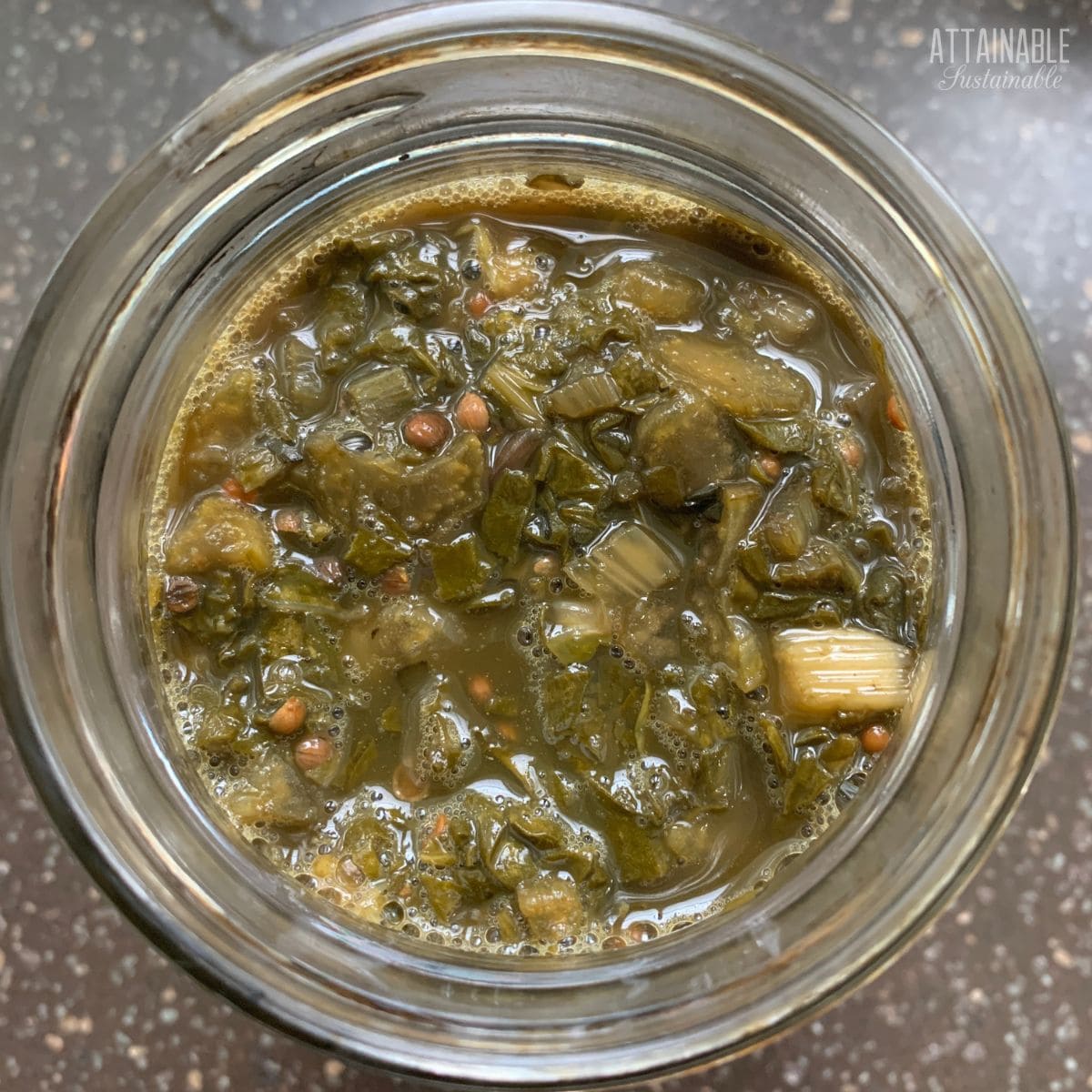
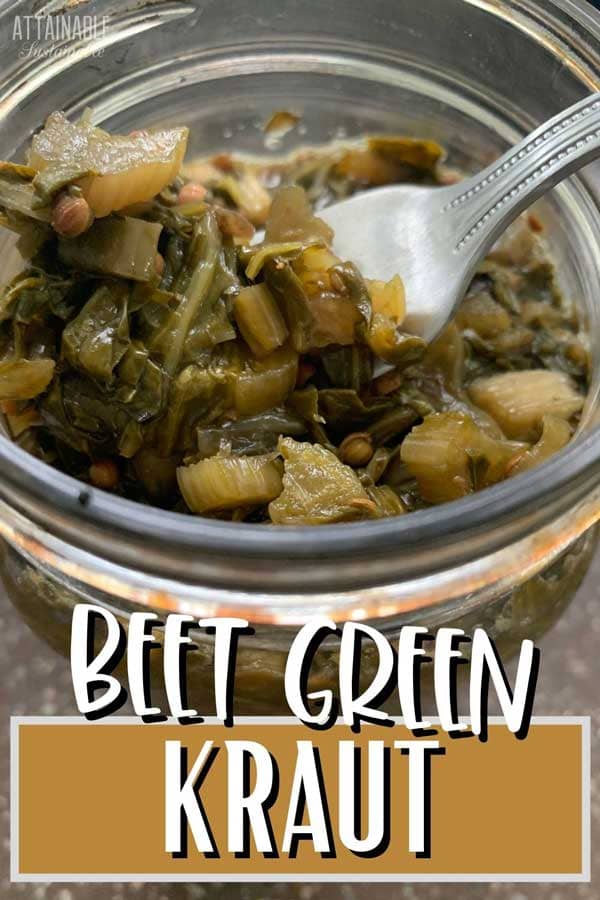

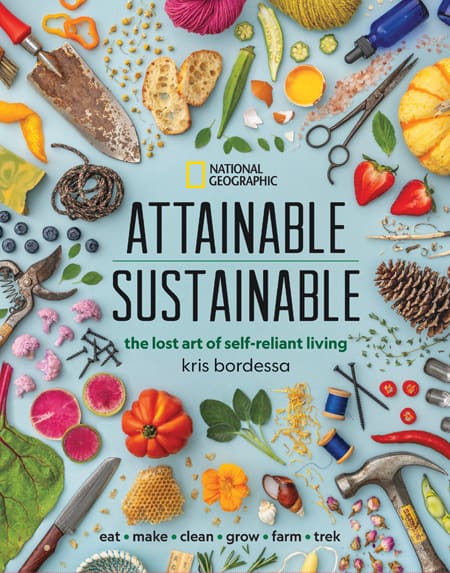
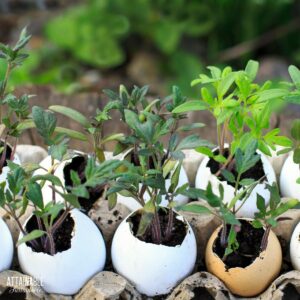
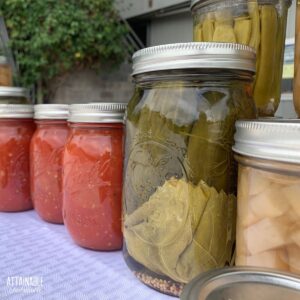

I just put mine together. At first I didn’t think there will be enough liquid to cover the greens but it turns out plenty. I use a rolling pin to crush the stems to get more water out. My hand wasn’t strong enough to squeeze out all the moisture. Now I have to wait two weeks and see how it turns out.
Rolling pin! That’s clever!
Can I use Swiss chard instead of beet greens
Yes!
Mine is just too dry ! Sticks to my hand moist – I can taste the salt…. I just harvested them this morning …. Not too keen on losing my harvest like this … don’t quite know what to do … add water ? Vinegar ? … I’m burning daylight….
I’m sorry, it’s hard for me to know what it needs from over here!
I can never get the glass weights to STAY on top! they ALWAYS just tilt and SINK. Ever have this problem, and how did you solve it?
I have two sets, large and smaller, but they both sink.
I place a whole leaf or two on top of the veggies before adding the weights.
I hope this helps.
Good advice!
I cut a circle from a cottage cheese container lid so it is bigger than the neck of the jar. Then I tuck it into the jar under the neck so the liquid is above it and then I can still add a weight if I want, but the liquid is above the leaves and the plastic.
Betty, That is clever. Thanks